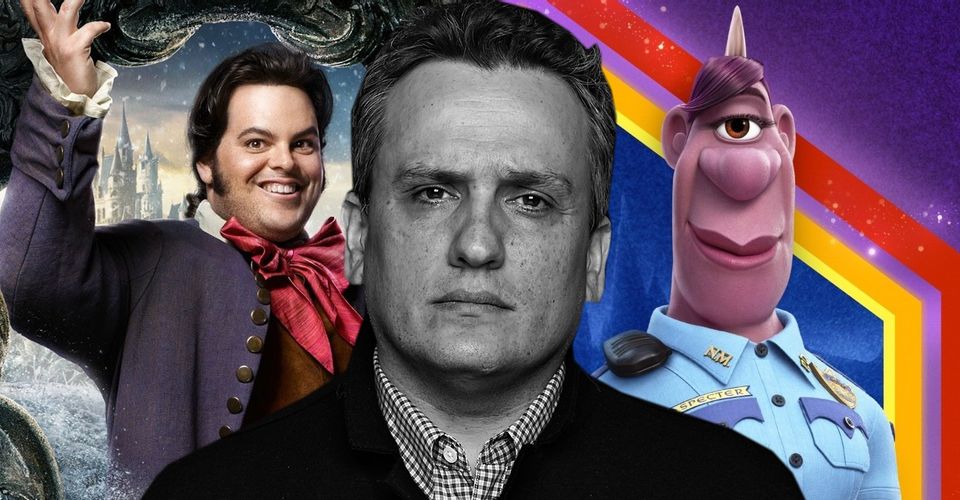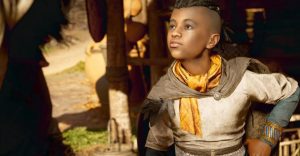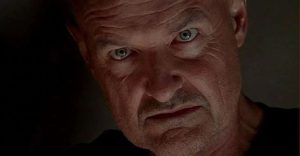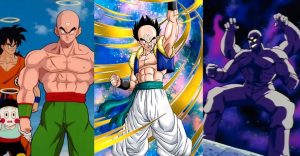Onward’s Gay Character Proves Disney’s Representation Problem

The much-hyped gay character in Onward is the latest example of Disney’s problem when it comes to queer representation in their movies. As times change, so too does Hollywood, if typically a whole lot slower than many people would like. That’s certainly been the case when it comes to mainstream representation of the LGBTQ community on the big screen in recent years. Queer-coded characters have been around since the early days of cinema, long before filmmakers like Gus Van Sant, Todd Haynes, and Gregg Araki pioneered New Queer Cinema in the late 20th century. Yet, save for the exceptions proving the rule, it’s only been over the last two decades that movies targeting general audiences have featured queer leads and/or key supporting players.
Obviously, there’s still a whole lot of improvement to be made in this regard, and nowhere is that more evident than when it comes to Disney. The Mouse House has yet to release an animated movie featuring an openly-queer protagonist, even after fans campaigned for years for Elsa to get a girlfriend in last November’s Frozen II. And while they did recently include a gay lead (namely, Frankie A. Rodriguez’s student choreographer Carlos Rodriguez) on their High School Musical: The Musical: The Series for Disney+, they also barely got into hot water for moving Love, Victor – a spinoff of the queer high school rom-com Love, Simon released by Fox in 2018 – from Disney+ to Hulu over concerns about it being “too mature” for the service.
Disney’s half-hearted efforts at LGBTQ representation in their films in particular has becoming a running joke by this point; even the Frozen II Honest Trailer called attention to it, referring to the supporting character Honeymaren (Rachel Matthews) as being “The Blink And You’ll Miss It Gay Character That Disney Will Pat Itself On the Back About.” That might seem a bit harsh to some but, frankly, the studio brought this on itself.
Disney Has A Lot Of “First” Gay Characters, All Disappointing

There’s been a trend in recent years of Disney movies being hyped for including the “first” queer character(s), only to disappoint with the actual results. This arguably started in 2016 with Finding Dory, which briefly featured what many interpreted to be a lesbian couple visiting the Marine Life Institute (where much of the film takes place). Unfortunately, rather than taking a definitive stance on the issue, director Andrew Stanton avoided confirming or denying anything, saying “They can be whatever you want them to be.” A year later, it came to light the character LeFou (Josh Gad) would be canonically gay in Disney’s live-action Beauty and the Beast. Frustratingly, however, this amount to little more than a brief moment where LeFou dances with another man.
Disney has since released a handful of movies featuring explicitly queer characters, beginning with last year’s Avengers: Endgame (where co-director Joe Russo plays a gay man grieving the loss of his husband) and continuing on to December’s Star Wars: The Rise of Skywalker, when Commander D’Acy (Amanda Lawrence) kisses another woman during the Resistance’s victory celebration near the end. Problem is, much like LeFou’s dance, these scenes are barely even a few seconds long and easy to miss if you’re not listening too carefully or, in Rise of Skywalker‘s case, paying attention to the background. These moments are pandering at best and too little to be significant as anything more than small incremental steps.
Sorry to say, that goes double for the equally-hyped “first” LGBTQ character in a Pixar movie in Onward. The scene in question takes place when the film’s leads Ian and Barley must disguise themselves after being pulled over by a couple of cops, including Officer Spector, a cyclops police officer voiced by Lena Waithe (herself, an openly gay actor-writer). Spector has a few lines and briefly mentions having a girlfriend before the scene ends and she basically vanishes from the rest of the movie. It’s yet another example that begs the question: why is Disney even including these poor moments of “representation” at all?
Disney’s Poor Representation Is Good For The Global Box Office

The answer, as it so often does with Hollwood, has to do with the money side of show business. Modern-day Disney prides itself on being at the front of the pack when it comes to being sensitive to issues of sexual orientation, race, and gender, and aspires to reinforce that image by incorporating LGBTQ characters in their movies. At the same time, they’re always concerned about doing anything that could damage their films’ commercial prospects. This includes the potential blowback to them announcing either the protagonist or a lead character in one of their releases (be it a Pixar, Star Wars, MCU, or Disney Animation feature) is openly queer. Instead, by only including supporting and otherwise minor gay characters, Disney is (theoretically) able to reap the benefits that come with the good press without ostracizing too many filmgoers in the U.S.
Worldwide, it’s also a tricky situation. A lot of countries don’t support LGBTQ rights and Onward was actually banned in places like Kuwait and Saudi Arabia (while still screening in other areas of the Middle East) for including Officer Spector at all. Disney can’t simply not screen their tentpoles in these countries either, given how vital international grosses are to most of their movies; case in point, Frozen II made $973 million of its $1.45 billion total outside the U.S. while Rise of Skywalker grossed more internationally ($559 million) than domestically ($515 million). By making these scenes of queer representation so short and inconsequential to the narrative, Disney is able to easily edit them out and still release their films without them when necessary.
What Disney Must Do For Representation In The Future

If there’s a silver lining to Disney’s underwhelming approach so far, it’s that these scenes have nevertheless helped to further normalize LGBTQ representation in mainstream films. Ideally, in the future, Disney movies will build on this by continuing to include one-off moments like these while at the same time making actual leads queer and fleshing its queer supporting players out into three-dimensional characters. If they don’t, the studio risks getting more of a negative reaction than a positive one every time they announce yet another “first” or similar milestone in LGTBQ representation for one of their upcoming films. Arguably, that’s already started to happen; neither the news about Rise of Skywalker nor Onward seemed to generate excitement the way Disney clearly thought they would.
Thankfully, the studio is taking steps in that direction. It’s already been confirmed The New Mutants (which Disney acquired in its Fox purchase) features a queer love story between two of its leads, while Marvel Studios and Chloé Zhao’s upcoming Eternals is confirmed to include the first gay MCU movie superhero and kiss. Obviously, that’s not an end in and of itself, and one suspects the kiss in Eternals will still be brief enough to be edited out for its theatrical run in certain countries. Even so, the closer Disney gets to offering full-blown representation for the LGBTQ community in their films and not just blink-and-you’ll-miss-it stuff like Officer Spector’s scene in Onward, the better.
Onward is available for streaming on Disney+ in the U.S. beginning April 3.
















